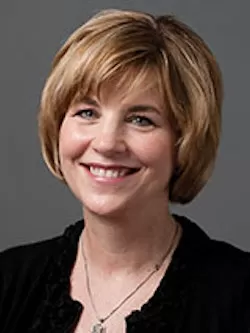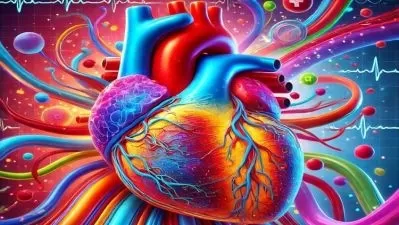Forensic History: Crimes, Frauds, and Scandals
Elizabeth A. Murray
12:15:38
Description
Modern history is filled with terrible crimes, baffling hoaxes, and seedy scandals. The infamous Jack the Ripper slayings. The alleged survival of Anastasia Romanov, the youngest daughter of the murdered Tsar. Seven-time Tour de France winner Lance Armstrong’s public fall from grace. The Chicago Tylenol poisonings and the copycat crimes that followed.
These events have the power to captivate us with their mystery and shock us with views into the darkest parts of the human psyche. As a society, we seek resolution of these crimes and scandals, to bring their perpetrators to justice and hopefully prevent such events from occurring again.
Step into the world of forensic science and study the most fascinating historical crimes and mysteries from the last two centuries in Forensic History: Crimes, Frauds, and Scandals. Delivered by acclaimed Professor Elizabeth A. Murray of Mount St. Joseph University, a forensic anthropologist with nearly 30 years of experience in the field, these 24 lectures are a remarkable blend of storytelling and science—a whirlwind tour that takes you from the gas-lit streets of Victorian London to the mountains of Puerto Rico to small-town America. As you journey around the world and into the past, you’ll re-examine modern history’s great crimes and scandals using the tools and insights of forensic science. In doing so, you’ll learn how cutting-edge advancements in science and technology are applied to investigations and how to evaluate evidence and think like a forensic scientist.
Revisit Modern History’s Great Crimes
“If you like mysteries, and thinking about how to solve them, you’re going to love this course,” says Professor Murray. Using her extensive background in the field of forensic science and her skill at weaving riveting stories, Professor Murray invites you peer over the shoulders of criminal investigators as they examine some of the most famous crimes in history.
- Jack the Ripper Murders: The story of one of modern history’s most infamous serial killers provides a unique window into the early days of forensic science. Between August 31 and November 9, 1888, five prostitutes in East London were brutally murdered and mutilated. The gruesome killings sparked a media frenzy and haunted the London Metropolitan Police, as they frantically searched for the elusive killer.
- Tylenol Poisonings: In the fall of 1982, several deaths in the Chicago area were linked to bottles of Extra Strength Tylenol deliberately poisoned with potassium cyanide—thousands of times the lethal amount. How did investigators and scientists work to quell a nationwide panic while they searched for a suspect?
- The Greatest Art Forger of All Time: Elmyr deHory, a Hungarian art forger, made an entire career—and a profitable living—from selling credible imitations of works by Picasso, Matisse, and Renoir.
- America’s Fatal Intelligence Leak: Robert Hanssen, a wiretapping, surveillance, and computer expert for the FBI doubled as a Soviet and Russian mole for 22 years. During this long career in treachery, Hanssen gave his handlers top-secret information on electronic eavesdropping and detailed lists of U.S. spies working inside Russia—breaches that have been called the worst intelligence disaster in American history.
These and other cases are examined in such detail that you’ll feel like you’re present during the investigations. And you’ll have a unique opportunity to watch as forensic scientists use the unlikeliest of clues to uncover motives, search for culprits, discredit false leads, and bring perpetrators to justice.
Discover Forensic Methodologies—and Mishaps
As with any field, forensic science isn’t perfect. In some instances, things can go very, very wrong. Professor Murray introduces you to several cases that shed light on what happens when the justice system goes awry, including:
- innocent people pressured into confessing to crimes they didn’t commit,
- crooked cops who falsify or tamper with evidence to secure convictions, and
- mistakes and malpractices in forensic labs that have drastic ramifications on cases.
Yet whether they’re controversial or by-the-book, solved or unsolved, hot or cold, these cases are an opportunity to gain deeper insight into the historic and cutting-edge methods and tools forensic scientists use on the job.
- Taphonomy: This fascinating science involves the study of what happens to organisms once they die and are deposited in different environments. Several research facilities in the United States, known informally as “body farms,” devote themselves specifically to scientifically studying human decomposition.
- CODIS: DNA analysis has been one of the most important revolutions in forensic science. Today, analysts in crime labs can upload encoded DNA information from criminal cases, as well as unidentified and missing persons investigations, into CODIS, a national DNA registry that automatically searches all of its records against each other.
- Digital forensics: Computers continue to revolutionize forensic science. Nearly all areas, from GPS technology and photography to drug analysis and forensic art, have been changed and enhanced by computers. Perpetrators have also capitalized on digital technology, however, and investigators now find themselves in an arms race with cybercriminals.
Dive Deep into Mystery
“I’ve been a practicing forensic anthropologist for nearly 30 years,” Professor Murray says. “But I’m also quite a history buff, and love a great story. So this is a wonderful opportunity for me to blend those interests and focus on what I hope you’ll agree are some fascinating cases!”
Praised by Great Courses customers for her introductory course in forensic science, noted author and award-winning professor Elizabeth A. Murray brings that same engagement and insight to her case-oriented look at the fascinating world of forensic science’s past, present, and future. Having participated in hundreds of investigations in America and abroad, Professor Murray intersperses examinations of watershed cases in forensic history with some of her own, equally intriguing, personal experiences.
The result: a well-rounded look at forensic history, from the early days of Jack the Ripper to the highly technological advancements in the 21st century. Prepare for a riveting, at times frightening, and always informative journey into the heart of true mystery with Forensic History: Crimes, Frauds, and Scandals.
More details
User Reviews
Rating
Elizabeth A. Murray
Instructor's CoursesDr. Elizabeth A. Murray is a forensic anthropologist and also Professor of Biology at Mount St. Joseph University, where she teaches doctoral-level human gross anatomy and undergraduate-level anatomy and physiology, as well as forensic science. She earned her bachelor's degree in biology from Mount St. Joseph University and her master's degree in anthropology and Ph.D. in Interdisciplinary Studies in Human Biology from the University of Cincinnati.
Most of Professor Murray's forensic casework has been in Ohio and Kentucky, where she has participated in hundreds of investigations. She is one of fewer than 100 anthropologists certified as a Diplomate by the American Board of Forensic Anthropology. Professor Murray has been honored with the Sears-Roebuck Foundation Teaching Excellence and Campus Leadership Award, and she twice earned the Clifford Excellence in Teaching Award. She has served as an instructor for numerous organizations, including the U.S. Department of Justice, the Armed Forces Institute of Pathology, and the International Association of Coroners & Medical Examiners. Her television appearances include National Geographic's Buried Secrets, Discovery Health's Skeleton Stories, The New Detectives, and Forensic Files. Her book Death: Corpses, Cadavers, and Other Grave Matters was named one of the top ten summer titles for students by the American Association for the Advancement of Science. Her 2012 book, Forensic Identification: Putting a Name and Face on Death, was selected as one of the outstanding books of 2012 by the prestigious National Science Teacher's Association.

The Great Courses
View courses The Great Courses- language english
- Training sessions 24
- duration 12:15:38
- English subtitles has
- Release Date 2023/06/06












